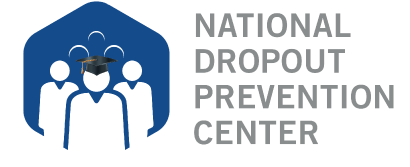
The 15 Effective Strategies for Dropout Prevention Online Courses
-
Contains 3 Product(s)
An “all systems on board” approach provides alignment and change required for a school and community to work together in making sure all students graduate. A systemic approach is an ongoing process focused on continuous improvement across all grade levels and among all stakeholders through a shared and widely communicated vision and focus, tightly focused goals and objectives, targeted research-based strategies and intervention, ongoing monitoring and feedback, and data-based decision making. It also requires the alignment of school policies, procedures, practices, and organizational structures. Finally, continuous monitoring of a systemic approach’s effectiveness is essential to maintaining consistency and for building capacity through change over time.
-
Register
- Member - $99
- More Information
-
Register
-
Contains 3 Product(s)
Instructional technology can effectively enhance and transform teaching and learning while engaging students in meaningful, current, and authentic efforts; addressing multiple intelligences, and adapting to students’ learning styles. Technology can be utilized to differentiate and individualize instruction based on specific student needs. The effective use of technology also includes transformational teaching approaches such as flipped and blended learning as appropriate. These approaches further prepare students for college and careers that will require them to acquire information to make decisions and solve problems.
-
Register
- Member - $99
- More Information
-
Register
-
Contains 3 Product(s)
Birth-to-five interventions demonstrate that providing a child additional enrichment can enhance brain development. The most effective way to reduce the number of children who will ultimately drop out is to provide the best possible classroom instruction from the beginning of their school experience through the primary grades.
-
Register
- Member - $99
- More Information
-
Register
-
Contains 3 Product(s)
Quality CTE programs and related career pathways and guidance programs with P-20 orientation are essential for all students. Youth need workplace skills as well as awareness and focus to increase not only the likelihood that they will be prepared for their careers, but also that school will be relevant to what is next.
-
Register
- Member - $99
- More Information
-
Register
-
Contains 3 Product(s)
Alternative schooling does meet the variety of student and family needs and the social behaviors required for youth in today’s world. Alternative schooling also offers school and community leaders the opportunity to fulfill their legal responsibility to provide equal access to education for all students.
-
Register
- Member - $99
- More Information
-
Register
-
Contains 16 Component(s), Includes Credits
Cite key implementation considerations about your center and how you plan to address them.
-
Register
- Member - $125
- More Information
-
Register
-
Contains 3 Product(s)
Early literacy interventions to help low-achieving students improve their reading and writing skills establish the necessary foundation for effective learning in all other subjects. Literacy development focus should continue P-12.
-
Register
- Member - $99
- More Information
-
Register
-
Contains 3 Product(s)
Many schools provide after-school, before-school, or summer options for academic, enhancement, and enrichment during which students benefit from tutoring, credit recovery, and support. These options are often high-interest options of learning and discovery for students and fill the “gap time” during which much learning can be lost. Such experiences are especially important for at-risk students because the time is filled with constructive and engaging activities and/or needed academic support.
-
Register
- Member - $99
- More Information
-
Register
-
Contains 3 Product(s)
Service-learning connects meaningful community service experiences with academic learning. This teaching/learning method promotes personal and social growth, career development, and civic responsibility and can be a powerful vehicle for effective school reform at all grade levels.
-
Register
- Member - $99
- More Information
-
Register
-
Contains 3 Product(s)
Everyone needs to be in a safe environment in order to thrive.
-
Register
- Member - $99
- More Information
-
Register
| Access Date | Quiz Result | Score | Actions |
|---|
